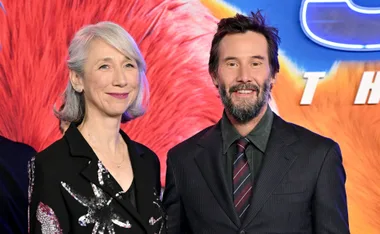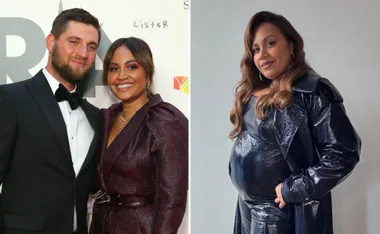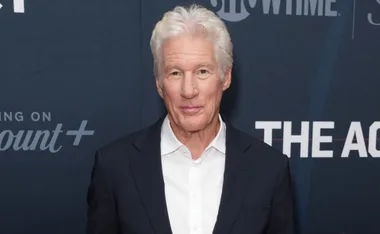These twins are happy and as cute as a button — but there is no mother in their home.
Instead, Huxley and Elijah, aged one, live with their gay dads, Michael Knowles, 31, and Jared Merrell, 28, in Brisbane.
They were conceived with the help of a local egg donor and gestational surrogate Rachel Kunde, but only after Michael and Jared spent three years and thousands of dollars investigating commercial surrogacy in the US.
Related: Sonia Kruger – I’m struggling with IVF at 47
“We are so lucky,” Michael tells the November issue of The Australian Women’s Weekly. “Rachel has been a surrogate before and enjoys the experience of being pregnant.
“The fact that we were two men made no difference to her whatsoever, as long as she could see that we would love and care for the children.”
Rachel, 31, is a mother of three with a supportive husband. She has been a surrogate once before, and plans to have an ongoing relationship with Michael, Jared and their twins.
“Rachel has given us the greatest gift,” says Jared. “It’s a wonderfully generous thing that she and her family have done. They have become close friends and come over for dinner every couple of weeks.
“It’s like having an extended family and we have the knowledge that our boys will have Rachel as an ongoing part of their lives.”
There was a time when a household like this would have been unheard of, but today they are increasingly common thanks to a reproductive revolution that is sweeping the world and redefining the shape and nature of traditional families.
The technologies heralding this revolution — sperm donation, egg donation and surrogacy in all their forms — undoubtedly bring joy to childless couples, create loving relationships and grant life to children who, in other circumstances, may never have existed.
However, these same technologies, say their detractors, also bring at least as much potential for harm as they do for happiness.
For the first time in history, says Professor Margaret Somerville, an Australian-born ethicist and the founding director at the Centre for Medicine, Ethics and Law at McGill University in Canada, society is becoming a willing accomplice in creating a “motherless” generation of so-called “stolen” children who, because of the anonymous nature of many overseas surrogacy agreements, may never be able to find the women who make up half their biological identity.
“To intentionally deprive someone of their biological heritage is wrong,” says Professor Somerville. “Ethically, all surrogacy is a bad idea. It breaks what is arguably the most intimate of all bonds, that of a mother and a child. Before the child is even conceived, the plan is for the woman who carries it to give it away and so in order for someone to gain a child, someone else has to lose one.
“As I see it, the most fundamental human right is the right to be born to both a mother and a father, and to know who those people are.”
Yet such concerns may be far too pessimistic, says Sam Everingham, the president of Surrogacy Australia.
He says the fear of a “stolen generation” is unfounded.
“As long as the parents are open and honest with the children about how they were created and they keep any books and records, then that is going to be the most important information the kids need as they grow up. And this is an important debate for people to engage with and think about.”
Similarly, the idea of “motherless” children being disadvantaged in some way is, he says, not supported by the research done so far.
“We have large communities of gay dads and children in both Sydney and Melbourne, and most of those families have significant female influences, whether it’s grandmothers, aunties or even ex-girlfriends, who are part of these kids’ lives. So the fears that people have that there are not going to be women as role models are not usually born out.
“Families in Australia are changing and perhaps the old model of the nuclear family is changing, too. There are many, many families in Australia where only one parent has a biological link to the child and sometimes neither parent has that link. And that is a reality.”
Read more of this story in the November issue of The Australian Women’s Weekly.












